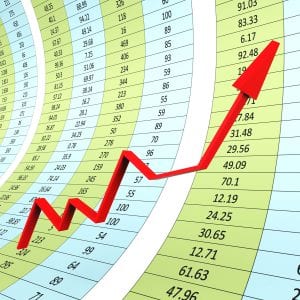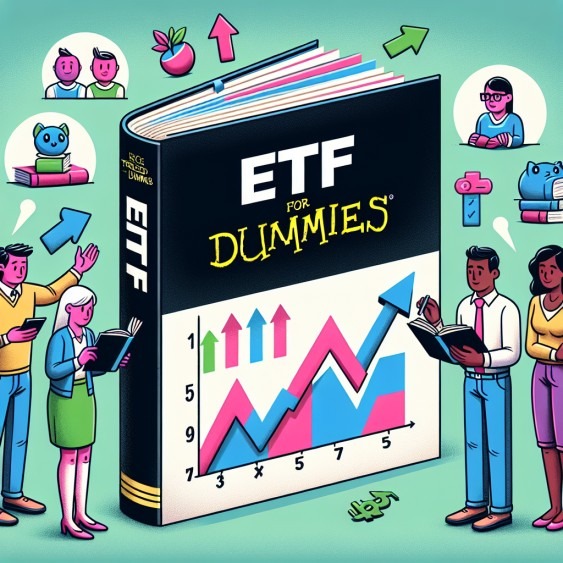What is an ETF for Dummies? Simplifying Winning Strategies
March 25, 2024
Introduction:
In the words of the great philosopher Aristotle, “The whole is greater than the sum of its parts.” This statement holds regarding investing in Exchange-Traded Funds (ETFs). As a beginner investor, you might wonder, “What is an ETF for Dummies?”
An exchange-traded fund (ETF) is a type of investment security that pools together various assets, including stocks, bonds, and other securities, that track an underlying index or sector. They can be structured differently, using different investment strategies to achieve their objectives. ETFs are comparable to mutual funds, but they trade on stock exchanges like ordinary stocks, and their shares can be bought and sold throughout the trading day.
What are ETFs?
ETFs are investment vehicles that pool various assets, such as stocks, bonds, and commodities, to track an underlying index or sector. They are similar to mutual funds but trade on stock exchanges like individual stocks. This unique structure allows investors to buy and sell ETF shares throughout trading, providing greater flexibility and control over their investments.
Benjamin Graham, the father of value investing, once said, “The intelligent investor is a realist who sells to optimists and buys from pessimists.” This contrarian approach to investing can be applied to ETF selection. Instead of following the crowd and investing in the most popular ETFs, consider looking for undervalued or overlooked funds that have the potential for long-term growth.
Diversification: The Key to Success
One of the primary benefits of investing in ETFs is diversification. By spreading your investments across various assets and sectors, you can minimize the impact of market volatility on your portfolio. As the renowned investor Warren Buffett advises, “Don’t put all your eggs in one basket.”
When selecting ETFs, consider a mix of broad-market funds, sector-specific funds, and international funds to create a well-rounded portfolio. For example, you might invest in an S&P 500 index fund for exposure to large-cap U.S. stocks, a technology sector fund for growth potential, and an emerging markets fund for international diversification.
The Importance of Risk Tolerance:
Before investing in ETFs, it is crucial to assess your risk tolerance. As the philosopher Epictetus said, “It’s not what happens to you, but how you react to it that matters.” Higher-risk investments, such as commodity or leveraged ETFs, may offer the potential for greater returns but also come with increased volatility. On the other hand, bond-focused and broad-market funds tend to be less risky but may provide lower returns over time.
When determining your risk tolerance, consider your investment goals, time horizon, and emotional capacity for handling market fluctuations. A financial advisor can help you create a personalized investment plan that aligns with your unique needs and preferences.
The Role of Technical Analysis:
Technical analysis, which involves studying historical price and volume data to identify trends and patterns, can be valuable for ETF investors. As the famous trader Jesse Livermore once said, “The market is never wrong; opinions often are.”
Technical indicators, such as moving averages and relative strength index (RSI), can help you identify potential entry and exit points for your ETF trades. However, it is essential to remember that technical analysis should be used in conjunction with fundamental analysis and not relied upon as the sole basis for investment decisions.
The Psychology of Investing:
Like any other form of investing, investing in ETFs is influenced by human emotions and biases. As the philosopher Immanuel Kant observed, “All our knowledge begins with the senses, proceeds then to the understanding, and ends with reason. There is nothing higher than reason.”
To be a successful ETF investor, you must know common psychological pitfalls, such as herd mentality and confirmation bias. Avoid making investment decisions based on fear or greed, and instead rely on rational analysis and a well-defined investment strategy.
Best Non-Leveraged ETFs for Low-Risk Investors
For low-risk investors, broad-market and bond-focused ETFs are a good choice. These funds offer diversification across a wide range of assets, reducing the impact of volatility on your portfolio.
Broad-Market ETFs:
– Vanguard S&P 500 ETF (VOO): Tracks the S&P 500 index, providing exposure to large-cap U.S. stocks. In 2023, it had a performance of 26.7%.
iShares Core S&P Total U.S. Stock Market ETF (ITOT) provides exposure to the entire U.S. stock market, including large, mid-, and small-cap companies.
Bond ETFs:
iShares Core U.S. Aggregate Bond ETF (AGG) provides broad exposure to the U.S. investment-grade bond market, including Treasury, agency, and corporate bonds.
– Vanguard Total Bond Market ETF (BND): Tracks the performance of the Bloomberg U.S. Aggregate Float Adjusted Index, which includes a diverse mix of U.S. investment-grade bonds.
Sector-Specific ETFs
Investors looking to focus on specific economic sectors can consider sector-specific ETFs. These funds allow you to invest in a particular industry or theme, such as technology, healthcare, or energy.
– Technology Select Sector SPDR Fund (XLK): Focuses on technology companies within the S&P 500.
Health Care Select Sector SPDR Fund (XLV): This fund provides exposure to the healthcare sector, including pharmaceutical, biotechnology, and medical device companies.
– Energy Select Sector SPDR Fund (XLE): Invests in companies involved in the energy sector, such as oil, gas, and renewable energy.
Index-Style ETFs
Index-style ETFs aim to track the performance of a specific market index, such as the S&P 500 or the Nasdaq 100. These funds offer broad exposure to the market and typically have lower fees than actively managed funds.
– Invesco QQQ Trust (QQQ): Tracks the Nasdaq 100 index, which consists of the 100 largest non-financial companies listed on the Nasdaq stock market.
– SPDR S&P 500 ETF Trust (SPY): Tracks the S&P 500 index, providing exposure to 500 large-cap U.S. stocks.
Higher-Risk Leveraged ETFs
Leveraged ETFs can be an option for investors willing to take on extra risk in pursuit of higher returns. These funds use derivatives and debt to amplify the returns of an underlying index, typically by 2x or 3x.
– ProShares UltraPro QQQ (TQQQ): Seeks to provide 3x the daily returns of the Nasdaq 100 index.
– Direxion Daily S&P 500 Bull 3X Shares (SPXL): Aims to deliver 3x the daily performance of the S&P 500 index.
It’s crucial to remember that leveraged ETFs are designed for short-term trading and may not be suitable for long-term investing due to the effects of daily rebalancing and compounding. They are appropriate only for experienced investors with a high-risk tolerance.
Conclusion:
ETFs offer beginners a convenient and cost-effective way to invest in a diversified portfolio of assets. You can develop a winning investment strategy by understanding the basics of ETFs, assessing your risk tolerance, and incorporating technical and fundamental analysis.
Remember the words of the great investor Sir John Templeton: “The four most dangerous words in investing are: ‘this time it’s different.'” Stay disciplined, maintain a long-term perspective, and continuously educate yourself about the ever-changing investing world.
Ultimately, the key to success in ETF investing lies in your ability to adapt, learn, and make informed decisions based on your unique financial goals and circumstances. As Socrates wisely said, “The only true wisdom is in knowing you know nothing.” Embrace the journey of learning and discovery as you navigate the exciting world of ETFs.
Other reads

The Rich Get Richer The Poor Get Poorer: Socioeconomic Inequality
Overcoming Crowd Phobia: Understanding the Fear of Large Crowds

US dollar vs Japanese Yen: No Bottom In Sight For Yen

ChatGpt vs Google bard: A Poetic Showdown

How to Make Organic Tortillas: A Step-by-Step Guide

De-Stress Meaning: Discover the Art of Relaxation

Stock Market Predictions 2023:Unveiling Market Trends

The Rich Get Richer and the Poor Get Prison

Recession: Best Time to Invest in Real Estate

The Banksters Club: Weapons of Mass Destruction Agenda

Fiat Fun: Unveiling the Source of Problems

How Often Should You Shower
The Free Market System Is Dead: The Fed Killed It

Why the US Medical System is Broken?

Define Fiat Money in Economics: The USD is A prime example
Market Psychology and Crowd Dynamics: Adapt, Adjust or Vanish



